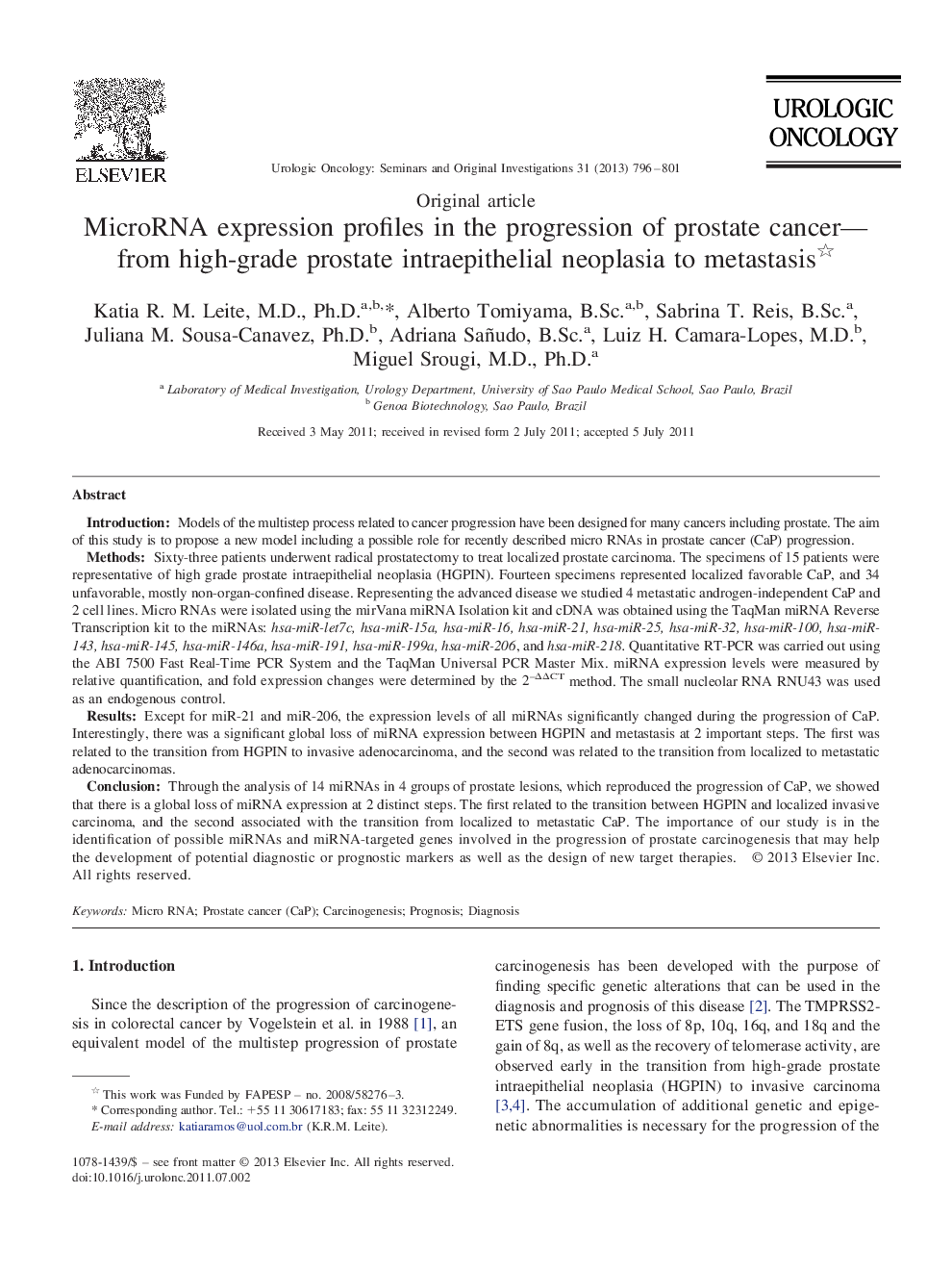| کد مقاله | کد نشریه | سال انتشار | مقاله انگلیسی | نسخه تمام متن |
|---|---|---|---|---|
| 3999961 | 1259361 | 2013 | 6 صفحه PDF | دانلود رایگان |

IntroductionModels of the multistep process related to cancer progression have been designed for many cancers including prostate. The aim of this study is to propose a new model including a possible role for recently described micro RNAs in prostate cancer (CaP) progression.MethodsSixty-three patients underwent radical prostatectomy to treat localized prostate carcinoma. The specimens of 15 patients were representative of high grade prostate intraepithelial neoplasia (HGPIN). Fourteen specimens represented localized favorable CaP, and 34 unfavorable, mostly non-organ-confined disease. Representing the advanced disease we studied 4 metastatic androgen-independent CaP and 2 cell lines. Micro RNAs were isolated using the mirVana miRNA Isolation kit and cDNA was obtained using the TaqMan miRNA Reverse Transcription kit to the miRNAs: hsa-miR-let7c, hsa-miR-15a, hsa-miR-16, hsa-miR-21, hsa-miR-25, hsa-miR-32, hsa-miR-100, hsa-miR-143, hsa-miR-145, hsa-miR-146a, hsa-miR-191, hsa-miR-199a, hsa-miR-206, and hsa-miR-218. Quantitative RT-PCR was carried out using the ABI 7500 Fast Real-Time PCR System and the TaqMan Universal PCR Master Mix. miRNA expression levels were measured by relative quantification, and fold expression changes were determined by the 2–ΔΔCT method. The small nucleolar RNA RNU43 was used as an endogenous control.ResultsExcept for miR-21 and miR-206, the expression levels of all miRNAs significantly changed during the progression of CaP. Interestingly, there was a significant global loss of miRNA expression between HGPIN and metastasis at 2 important steps. The first was related to the transition from HGPIN to invasive adenocarcinoma, and the second was related to the transition from localized to metastatic adenocarcinomas.ConclusionThrough the analysis of 14 miRNAs in 4 groups of prostate lesions, which reproduced the progression of CaP, we showed that there is a global loss of miRNA expression at 2 distinct steps. The first related to the transition between HGPIN and localized invasive carcinoma, and the second associated with the transition from localized to metastatic CaP. The importance of our study is in the identification of possible miRNAs and miRNA-targeted genes involved in the progression of prostate carcinogenesis that may help the development of potential diagnostic or prognostic markers as well as the design of new target therapies.
Journal: Urologic Oncology: Seminars and Original Investigations - Volume 31, Issue 6, August 2013, Pages 796–801